Video Summary
- There are 3 major salivary glands on each side of the face:
- The parotid gland, located in front of the ear,
- The submandibular gland, located below the jaw bone, and
- The sublingual gland, located under the tongue.
- There are many minor salivary glands located throughout the mouth, tongue, and throat, which are much smaller than the major glands.
- There are many important nerves that travel near the salivary glands.
In order to begin to understand salivary gland cancer, it is important to gain some background knowledge on the anatomy of the salivary glands. In the head and neck, there are two main types of salivary glands: major salivary glands and minor salivary glands. The major salivary glands consist of three different glands: parotid, submandibular, and sublingual. The glands in the face and neck are symmetrical, meaning that there is one of each on either side of the face and mouth.
There are many different nerves that travel around and through the salivary glands. The location of these nerves is important, as they can become involved by salivary gland tumors. If surgery becomes necessary to treat salivary gland cancer, these nerves must be identified and monitored very carefully in the hopes of preserving their function.
Major Salivary Glands
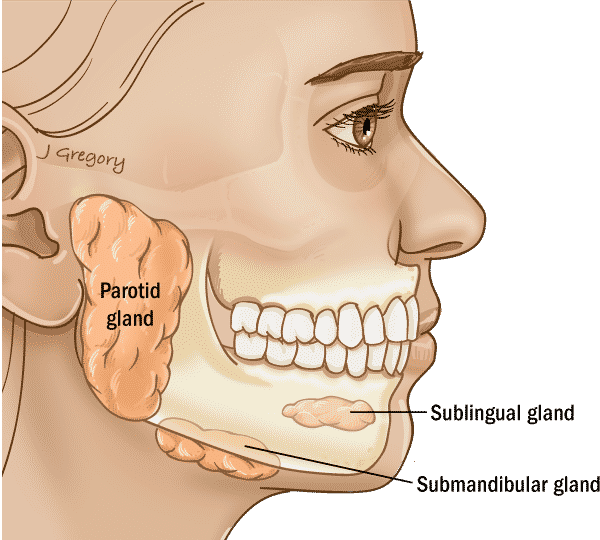
The major salivary glands include the parotid glands, the submandibular glands, and the sublingual glands. They are called “major” because they are larger than the minor salivary glands. Each major salivary gland is surrounded by an envelope or fascial layer, and each one has its own tube (or duct) that connects it to the mouth and transports the saliva produced by the gland.
Parotid Salivary Glands
The parotid glands are the largest salivary glands, sitting in front of each ear and extending from below the cheekbones to the level of the angle of the lower jaw and back below the ear lobe. The glands sit on top of the masseter muscle, which is the main muscle used for chewing. The parotid glands taper down at the bottom into a “tail,” from which the saliva-carrying tubes join together to become a single duct (called the “Stenson’s duct”) that leaves the gland and travels to the mouth. The parotid glands produce the most saliva out of any of the other glands. The nerve that controls the movement of the face, called the facial nerve, travels through the middle of the parotid glands. It forms multiple branches within the gland that control the 17 muscles for facial expression on each side of the face and are therefore very important. Surgeons will work to locate and preserve these nerve branches when operating on the parotid gland.
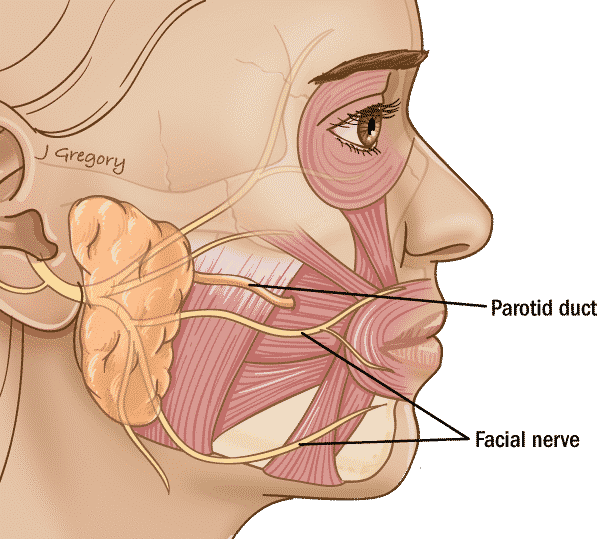
The parotid glands are the most common sites of salivary gland tumors, as 80% of salivary gland tumors arise in the parotid gland. However, most of these parotid tumors are benign and not cancerous. Just like the other major salivary glands, the parotid glands are enclosed by envelopes, which happen to also contain lymph nodes. This means that a lump in a parotid gland could actually be a lymph node that is enlarged due to cancer from another part of the body, or due to infection and inflammation (non-cancerous). The most common cause for an enlarged and cancerous parotid lymph node is due to a skin cancer located on the side of the face or head.
Submandibular Salivary Glands
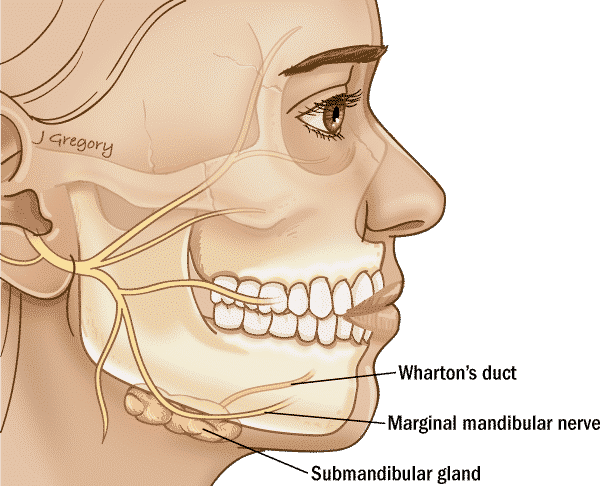
The submandibular glands lie in what is called the submandibular triangle, the area of the neck below the jawbone. The main saliva-carrying tube from the submandibular gland is called “Wharton’s duct,” and it opens into the mouth right under the tongue. One of the branches of the facial nerve runs just over the top of the submandibular gland and is called the marginal mandibular nerve. This nerve controls the lower lip and allows it to move downwards during normal facial expression.
Sublingual Salivary Glands
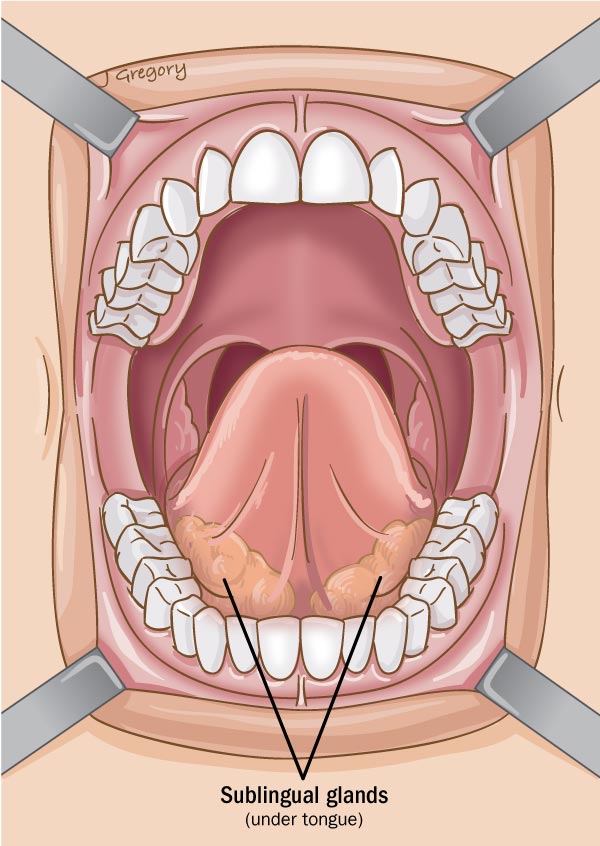
The sublingual glands sit on the floor of the mouth under the tongue, with one gland on either side of the mouth. The lingual nerves, which provide sensation to the sides of the tongue, run in very close proximity to these glands. The saliva-carrying tubes from these glands are called the “ducts of Rivinus,” and they open directly into the mouth.
Minor Salivary Glands
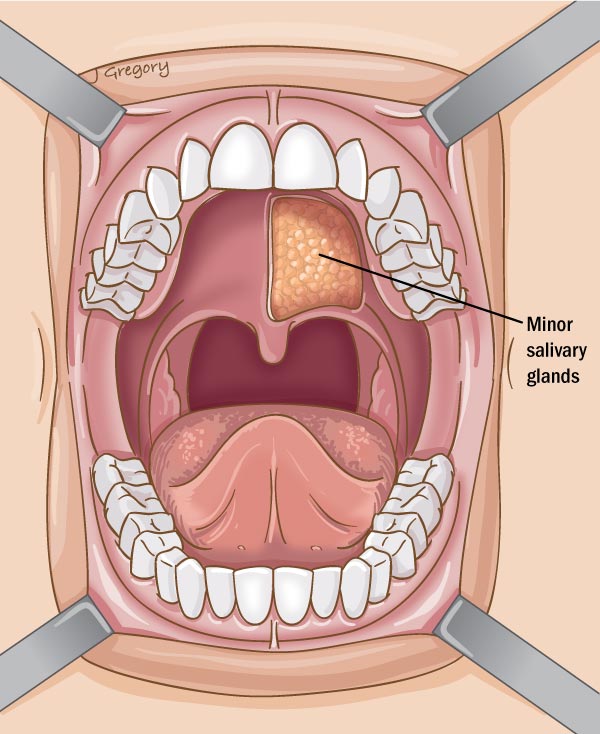
The minor salivary glands are much smaller than the major salivary glands. They are not surrounded by envelopes and do not have their own saliva-carrying tubes. There are thousands of minor salivary glands throughout the mouth, tongue and throat, but they are mainly located in a few places: the junction of the hard and soft palate on the roof of the mouth, lips, and along the inside of the cheeks.













